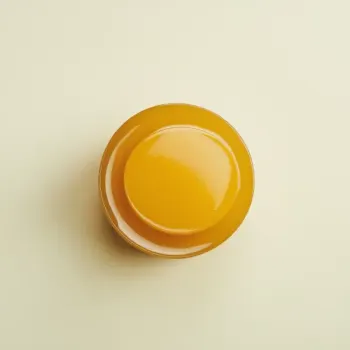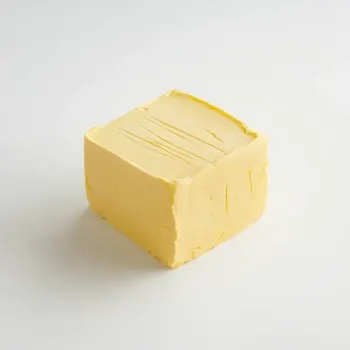Ghee and butter are both dairy products used in cooking and baking. Ghee is clarified butter with a nutty flavor, higher smoke point, and is lactose-free. Butter is cream-based, with a milder taste, and contains lactose and milk proteins. They can often be substituted for each other in recipes.

Ghee, often referred to as clarified butter, is made by simmering butter to remove the water content and separating the milk solids. This results in a pure, nutty-flavored fat that's highly revered in Indian and Middle Eastern cuisines.

Butter is a dairy product composed of milk fat that's churned from cream. It contains butterfat, milk proteins, and water, and is a staple in baking, cooking, and as a spread in many cultures around the world.
Ghee has a higher smoke point than butter, making it more suitable for high-heat cooking. While both have rich, creamy flavors, ghee's flavor is more intense and nutty due to the caramelization of milk solids. Butter, on the other hand, has a milder, sweeter taste. Ghee is lactose-free, while butter contains lactose and milk proteins.

Your ultimate Recipe Box, Meal Planner, and Cooking Class all in one
Ghee can be used in baking for a deeper, nutty flavor and is ideal for those with lactose sensitivity. Expect a slight variation in texture due to the absence of milk solids. Butter is a traditional baking ingredient that contributes to the tender crumb and flaky layers in pastries. Its creaminess and moisture content are essential for the classic taste and texture of baked goods.
Ghee's high smoke point makes it ideal for sautéing and frying. It imparts a rich aroma and is perfect for creating a crispy, golden crust on foods. Butter is suitable for gentle sautéing, adding a rich flavor to dishes. It's best used at lower temperatures to prevent burning the milk solids.
Use ghee for a clarified, nutty base in sauces or as a dairy-free alternative to butter in spreads. Its concentrated flavor enhances the taste profile of sauces. Butter is the foundation of classic sauces like hollandaise and beurre blanc, and as a spread, it offers a creamy, melt-in-your-mouth texture.
Both ghee and butter contain healthy fats that can be part of a balanced diet in moderation.
| Nutrient | Ghee ( per Tablespoon ) | Butter ( per Tablespoon ) |
|---|---|---|
| Fat | 12.7g | 11.52g |
| Sodium | 1mg | 82mg |
| Calcium | 0mg | 3mg |
| Protein | 0g | 0.12g |
| Calories | 112 | 102 |
| Carbohydrates | 0g | 0.01g |
Ghee is often considered healthier due to the absence of lactose and milk proteins, and its higher smoke point reduces the risk of producing harmful free radicals during cooking.
No, ghee is still an animal product and not suitable for a vegan diet. However, it can be a lactose-free alternative.
Yes, due to the removal of water and milk solids, ghee has a longer shelf life and can be stored at room temperature for extended periods.
Ghee can be used in baking, but you may need to adjust the recipe slightly by adding liquid to compensate for the lack of water content in ghee.
Yes, ghee will impart a more intense, nutty flavor to dishes compared to the milder taste of butter.